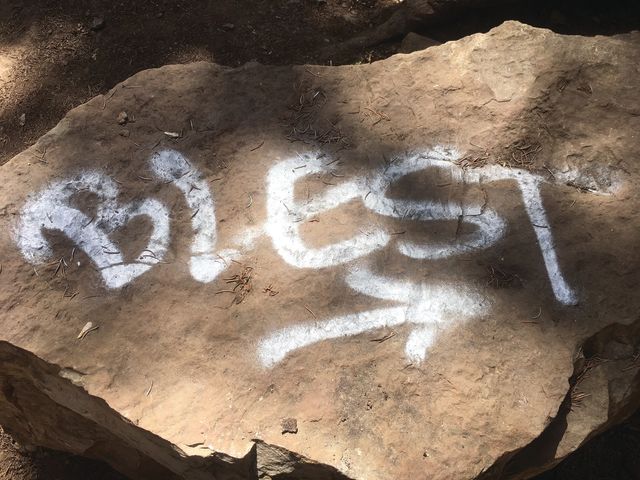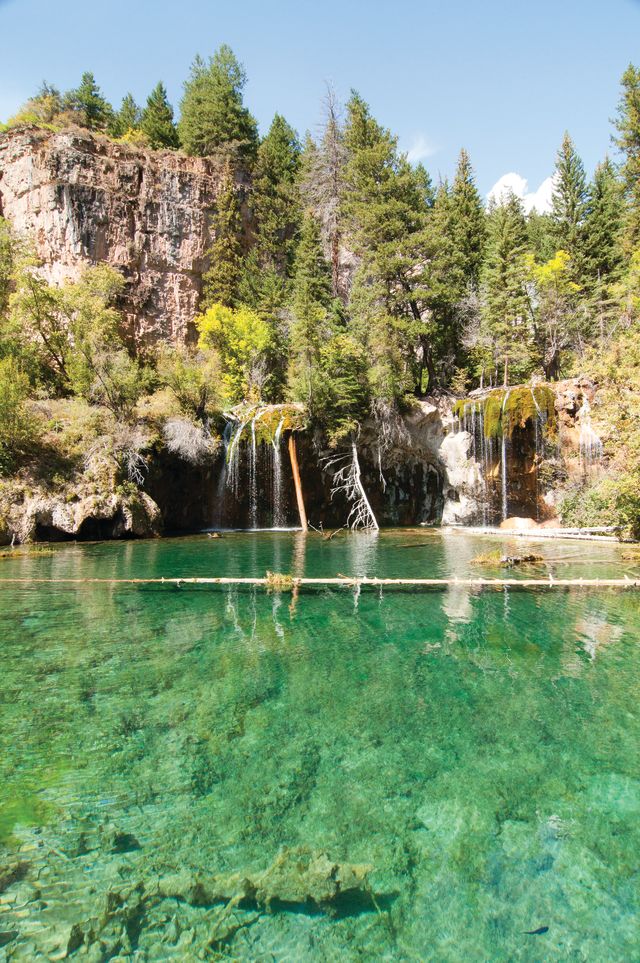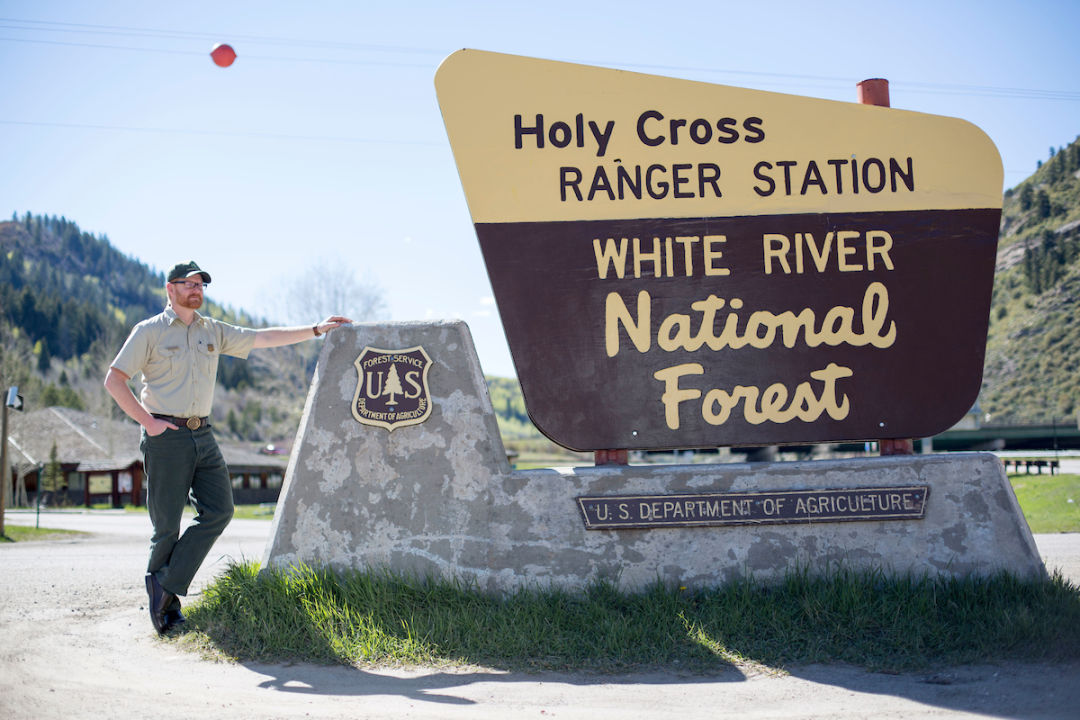A Tolled Shuttle Is in the Works for Hanging Lake

Graffiti discovered in April by USFS employees.
Image: Rebecca Stumpf
Earlier this spring when US Forest Service employees discovered the graffiti tag “BLEST” spray-painted on trees and rocks along the trail to Hanging Lake—a waterfall-fed turquoise pool deep in Glenwood Canyon designated as a National Natural Landmark in 2011—they were more crestfallen than surprised. “Our reaction when we found the vandalism was just disappointment,” says Aaron Mayville, district ranger for the Eagle-Holy Cross Ranger District, which oversees nearly 700,000 acres of public lands from Vail Pass to Hanging Lake, 22 miles west of Eagle. “Every year we have some occurrences of vandalism, and it’s just a very visual and visceral example of some of the bad behavior that goes on there.”

Hanging Lake's beauty tends to attract a crowd, but that doesn't come without a price.
Image: Rebecca Stumpf
The other kinds of bad behavior Mayville refers to range from defiant pet owners (who blatantly ignore signage prohibiting dogs) to visitors swimming in the lake (also verboten, since body oils dissolve fragile shoreline mineral deposits) to hikers ambling off trail (and trampling delicate vegetation) and parking scofflaws who leave their vehicles on grass medians, and even on the bike path. On peak holiday weekends when overflow traffic backs up onto the interstate, disputes over parking spaces sometimes escalate from harsh words to fisticuffs.
“Fights break out, people park illegally, it’s chaos,” says Mayville, who notes that the situation has become progressively worse every summer as seasonal visitation has surged from 90,000 in 2012 to 137,000 in 2016. “You have the stress and chaos and high tempers. You see people not staying on the trails, incidents of graffiti and vandalism, people jumping into the lake, bringing dogs and degrading the overall experience for the responsible users.”

District Ranger Aaron Mayville at the US Forest Service's White River National Forest Headquarters in Minturn.
Image: Rebecca Stumpf
Driven by complaints and an escalating public safety liability, the Forest Service in 2013 convened a stakeholder group (including the nearby town of Glenwood Springs, Garfield County, the Colorado State Patrol, and the Colorado Department of Transportation) to assess the situation and recommend a long-term solution. The group’s Hanging Lake Visitor Use Management Plan was released for public comment in June. The proposal, modeled after similar programs at Utah’s Zion National Park and Aspen’s Maroon Bells, calls for a reservation system that would require visitors to park at a remote lot in or around Glenwood Springs and pay for reserved seats on shuttle buses to and from the Hanging Lake trailhead, limiting the influx of daily visitors to no more than 615 (established as the site’s capacity, just under the weekday summer average, but nearly half the number that has inundated the lake on previous Fourth of July weekends). Pending public approval and assuming questions about funding and fees imposed by the shuttle service can be resolved, Mayville says the new management will go into effect as soon as the summer of 2018.
“The bottom line is that there are more cars coming into this place than we can accommodate,” he stresses. “This has the potential to really improve the experience for our visitors, and give the trail and the lake a little bit of a break.”
What’s the alternative?
“Closing the lake is always a tool in our toolbox,” Mayville says. “But I’m optimistic, and I don’t think it will come to that."






































